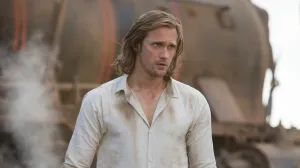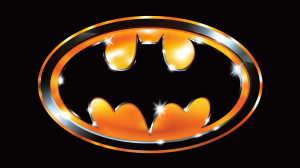Marvel’s Black Panther will be hitting the MCU in a couple of weeks, but Wesley Snipes reveals that the character’s solo debut could have been much different.
Videos by ComicBook.com
Snipes, who is best known by Marvel fans as the vampire hunter Blade, previously put a lot of effort into getting a Black Panther movie off the ground in the 90s. There have been rumors about the project for some time, but Snipes recently pulled back the curtain on the project, including why it interested him in the first place.
“I think Black Panther spoke to me because he was noble, and he was the antithesis of the stereotypes presented and portrayed about Africans, African history and the great kingdoms of Africa,” Snipes tells THR. “It had cultural significance, social significance. It was something that the black community and the white community hadn’t seen before.”
Part of the reason Snipes loved the project was the opportunity to show Africa in a much different light than it had been previously portrayed on film.
“Many people don’t know that there were fantastic, glorious periods of African empires and African royalty — Mansa Musa [emperor of the West African Mali Empire] and some of the wealthiest men in the world compared to the wealth of today,” Snipes explains. “That was always very, very attractive. And I loved the idea of the advanced technology. I thought that was very forward thinking.”
Snipes saw the potential for the character on the big screen, but a few things stood in his way, including the status of Marvel itself. You have to remember that this was back in the 90s when Marvel had just filed bankruptcy and had a string of film duds to its name. The good news was that Snipes was as popular as ever, but even someone of his star power had a hard time getting studios and people to realize that the Black Panther character was a superhero, not a member of the civil rights movement.
“They think you want to come out with a black beret and clothing and then there’s a movie,” Snipes said.
The next issue was locking in a director and a screenwriter, and both hunts were a bit exhausting. “We went through three different scripts and a couple of different director options — very interesting director options at the time,” Snipes said.”
People like Mario Van Peebles and John Singleton were on the short list, the latter of which had just hit it big with Boyz n the Hood. “They were trying to find the young, up-and-coming black directors,” Snipes said.
In fact, Snipes remembers his meeting with Singleton extremely well, and it turns out they had very different ideas about what the movie should be.
“I laid on him my vision of the film being closer to what you see now: the whole world of Africa being a hidden, highly technically advanced society, cloaked by a force field, Vibranium,” Snipes said. “John was like, ‘Nah! Hah! Hah! See, he’s got the spirit of the Black Panther, but he is trying to get his son to join the [civil rights activist] organization. And he and his son have a problem, and they have some strife because he is trying to be politically correct and his son wants to be a knucklehead.’ “
“I am loosely paraphrasing our conversation,” Snipes said. “But ultimately, John wanted to take the character and put him in the civil rights movement. And I’m like, ‘Dude! Where’s the toys?! They are highly technically advanced, and it will be fantastic to see Africa in this light opposed to how Africa is typically portrayed.’ I wanted to see the glory and the beautiful Africa. The jewel Africa.”
Ultimately that version never came to fruition, and Snipes feels it worked out for the best.
“Thank God,” Snipes proclaims. “I love John, but I am so glad we didn’t go down that road, because that would have been the wrong thing to do with such a rich project.”
The current version of the character is sporting a highly advanced costume, but the original version was very different, and it makes Snipes laugh to this day.
“Actually, I figured it would be a leotard,” Snipes said. “A leotard with maybe some little cat ears on it. I would have to be in shape and just be straight bodied up. I never imagined anything more than a leotard at the time, which I didn’t have a problem with because I started out as a dancer.”
They made some progress on the project, especially when they met with screenwriter Terry Hayes, who former Marvel editor in chief Tom DeFalco said made an “incredible pitch.”
“I just remember as the writer was describing the scene, I could see it in my mind,” recalls DeFalco. “[I thought], ‘If this is our Black Panther movie, sign me up!’ He really had a terrific handle on the character, on the action, on the stakes and everything else.”
Unfortunately, the project would stall soon after, despite Snipes doing his best to get it off the ground.
“Ultimately, we couldn’t find the right combination of script and director and, also at the time, we were so far ahead of the game in the thinking, the technology wasn’t there to do what they had already created in the comic book,” Snipes says.
The good news is that he would later reteam with Marvel to bring Blade to the screen, delivering the first real success for the company on the big screen.
“It was a natural progression and a readjustment,” Snipes says. “They both [Black Panther and Blade] had nobility. They both were fighters. So I thought, hey, we can’t do the King of Wakanda and the Vibranium and the hidden kingdom in Africa, let’s do a black vampire,” he says, laughing.
Fans can soon see Marvel Studios take on the character when Black Panther hits theaters on February 16.








